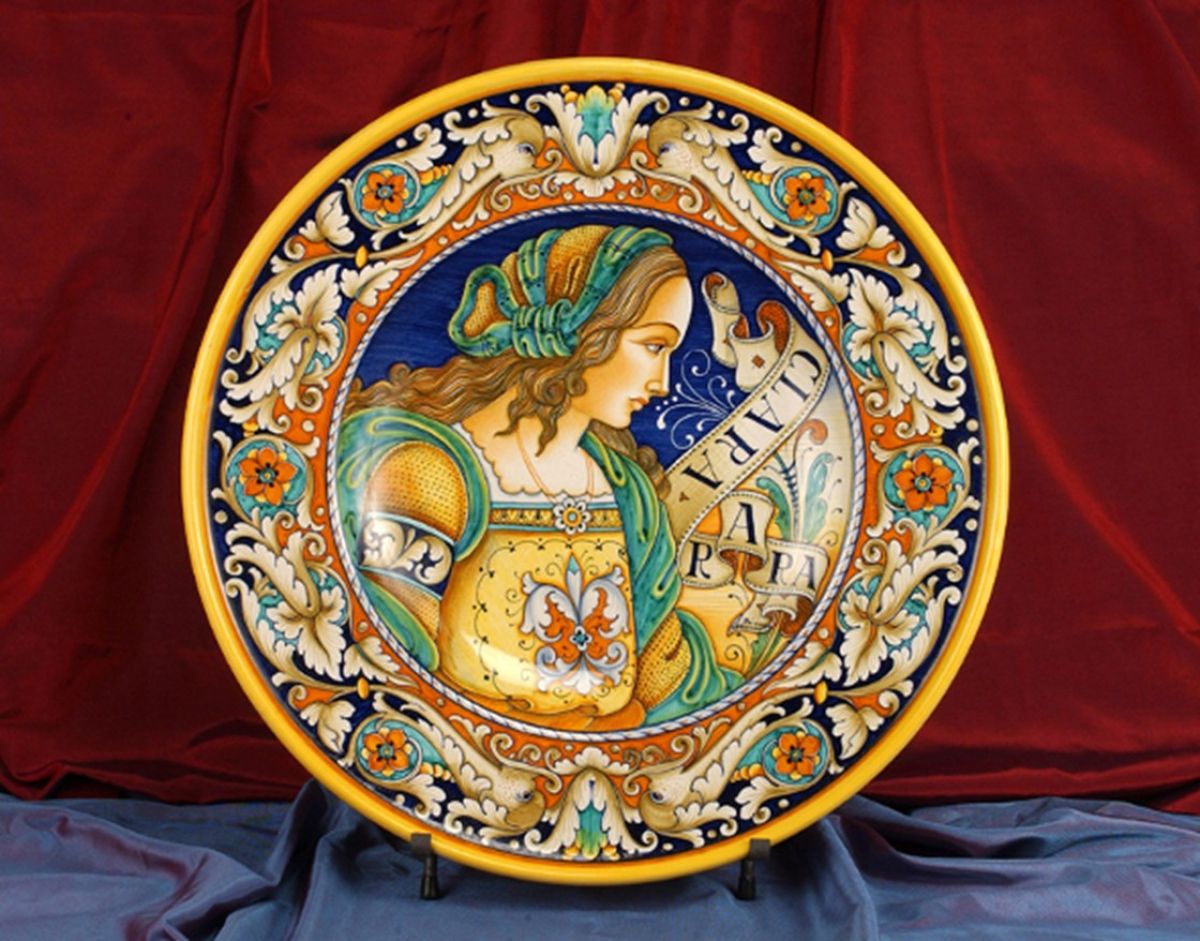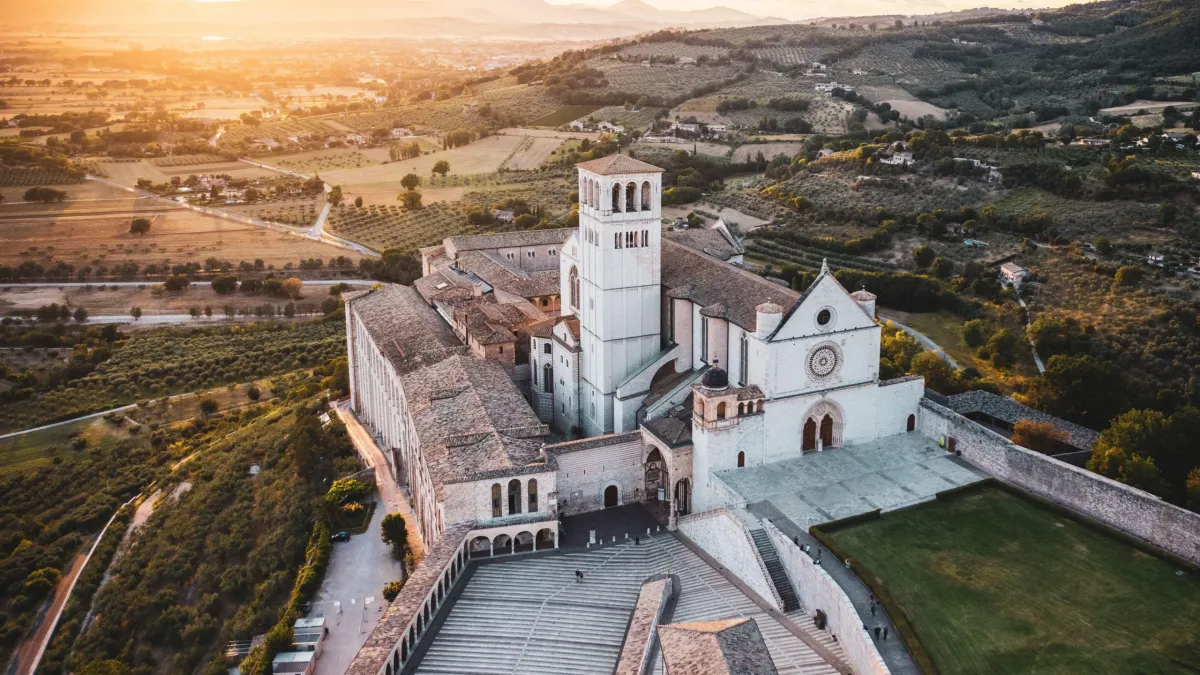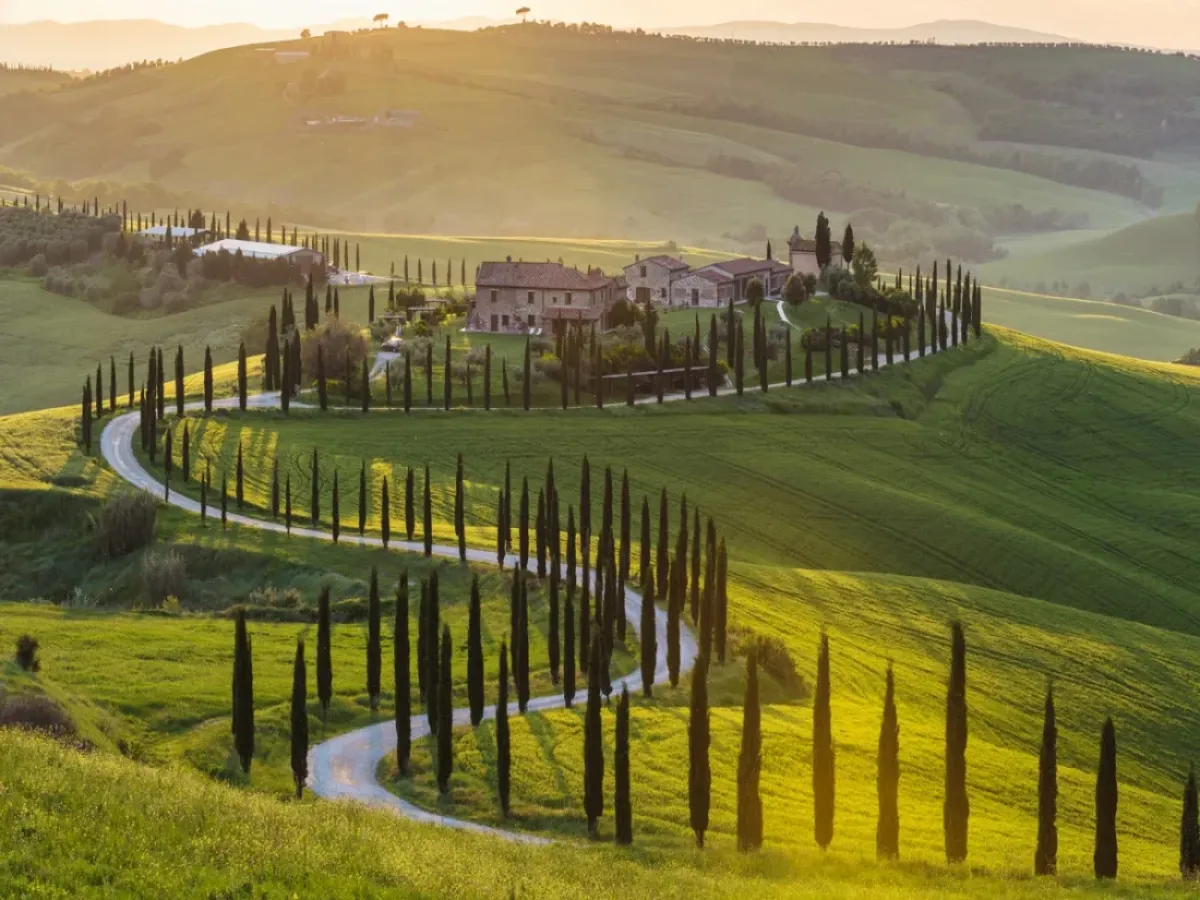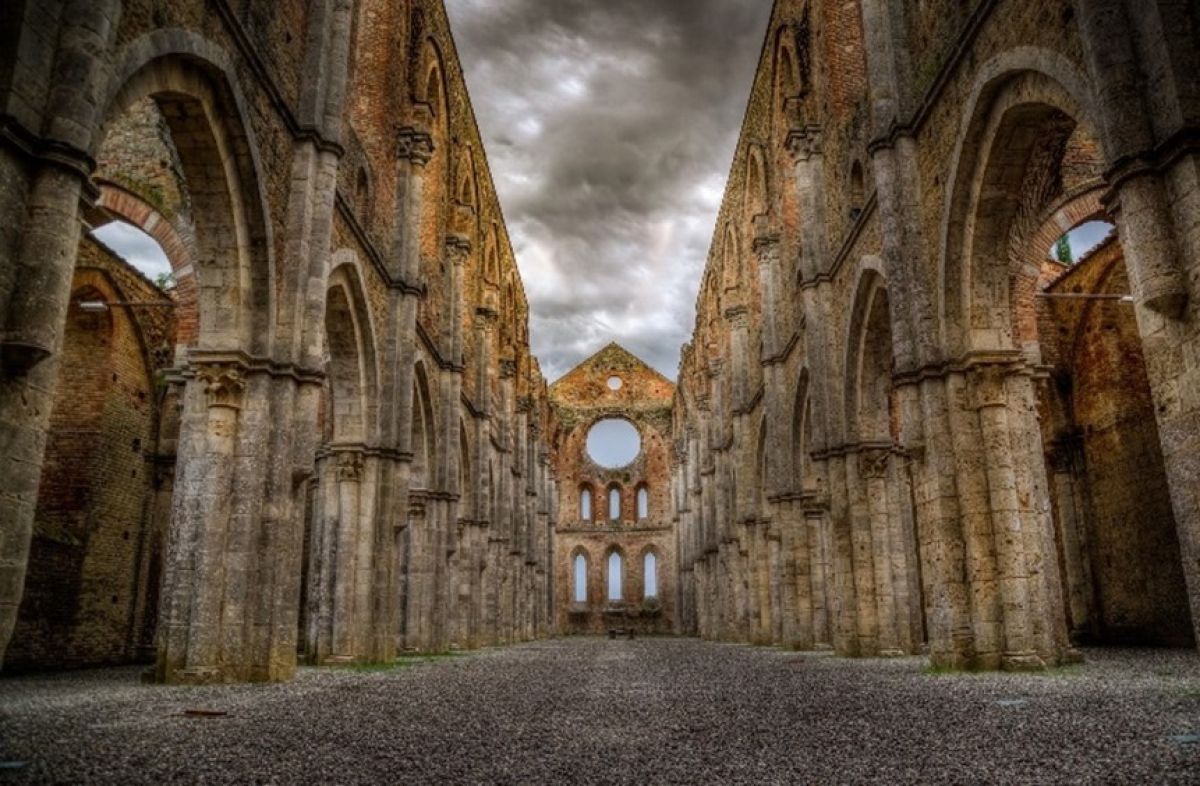1-WEEK ITALIAN EXCELLENCES
PRIVATE TOUR
Central Italy
From Umbria, the land of Saints, to the marvellous sceneries of Chianti and Val d’Orcia. Enjoying harmony between man and nature through food and wine in Central Italy.
HIGHLIGHTS
- Umbria, the green heart of Italy
- Assisi, the extraordinary land of St. Francis
- Val d’Orcia, where man and nature blend with harmony
- Volterra, masters of the “smooth” stones
- Chianti, winemakers for 1,000 years
WHAT’S INCLUDED
Overnights at 3* to 5* Hotels, Country Houses and Historical Palaces (when available), City Apartments along the itinerary
Transfers by private car / minivan / minibus
Activities:
- Day 1: Visit of an Umbrian olive oil mill with tastings
- Day 2: Full-day private E-bike excursion to Assisi and Bevagna area – Visit of a Sagrantino di Montefalco winery with tasting
- Day 3: Full-day excursion to Assisi area and Deruta – Truffle hunt experience with lunch in Assisi area – Visit of an Artisan Ceramics Laboratory in Deruta
- Day 4: Tuscan cooking class with dinner in Val d’Orcia area
- Day 5: Full-day excursion to Val d’Orcia area – 3-hour private gourmet walking tour of Montepulciano city centre with an Authorised Tourist Guide, with tastings of Vino Nobile, Pecorino cheese and truffle – Visit of a Brunello di Montalcino wine cellar with tastings
- Day 6: Full-day excursion to Volterra and Chiustino – Visit of an alabaster laboratory in Volterra – Admission to San Galgano Abbey in Chiusdino
- Day 7: Full-day private E-bike excursion in Val d’Orcia area with a picnic – Visit of a local olive oil mill with tastings
Customizations and Options:
- Pick up at Rome Airport /Railway Station at the start of the tour
- Accommodation in Rome the night before the start of the tour
- Drop off at Florence Airport/Railway Station at the end of the tour
- Other activities upon request
Benvenuti in Italia, welcome to Umbria!
Umbria is the greenest region of Italy, and its citizens are famous for their hospitality.
This morning, your first stop will be Spoleto, a medieval hill town in the Umbria region, famous for its summer music festival, “Festival dei Due Mondi”. Thick walls and a magnificent gorge surround the city, and fine medieval and Roman monuments sit along the streets. The Duomo is one of Spoleto’s most pleasing sights: dating back to the 12th century, the Cathedral is set against a backdrop of hills and valleys. The Rocca is high above the town, a Papal fortress used as a prison until the 1980s. A massive bridge, Ponte delle Torri, built in the 14th century, functioned as a bridge and aqueduct; we can walk on it for breathtaking views of the valley and gorge below.
You may have lunch in Spoleto: here, you can try a typical Spoleto food, “torta al testo” (bread prepared with water, flour, salt, pepper, and olive oil and cooked on a particular marble stone in a wood-burning oven); it is sometimes stuffed with ham, sausage, or simply with herbs prepared in olive oil.
Then, you’ll head for Deruta, famous for its splendid, brightly coloured maiolica. The production of ceramics in Deruta goes back to the 13th century. In those times, small “bottegas” produced objects of everyday use: jugs, bowls, and basins. Maiolica reached its apex in the 16th century, with artists making various motifs, such as mythological figures, battles and religious scenes.
In Deruta, you will visit a maiolica laboratory, discovering all the creative processes of the fascinating craftsmanship of ceramics, from the creation of models to the exit of the artefacts from the oven.
Tonight, for dinner, you may enjoy “salumi di cinghiale o cervo” (boar or deer sausage) and pecorino cheese or taste the region’s prized white truffle oil. Don’t forget to sip the red wine Rubesco Riserva or the red Sagrantino di Montefalco.

Assisi is the birthplace of Francis, the nobleman who renounced all his possessions to devote his life to helping the needy and became the most acclaimed Saint of the Catholic Church.
The splendid Basilica, one of the emblems of Christianity, located on Mount Subasio and overlooking the entire valley, is dedicated to him. Apart from being a strong appeal to millions of religious believers, the Basilica is a monument of great artistic value. The construction of the Basilica began two years after his death, in 1228, and between the end of the 13th and the beginning of the 14th century, the Basilica’s walls were frescoed by the best artists of that time: Giotto, Cimabue, Simone Martini and Pietro Lorenzetti. St. Francis’ Basilica consists of two churches laid upon each other and a crypt containing the tomb of the Saint. The Lower Basilica presents a simple facade with a double front portal embellished with a rose window and a mosaic. The interior is decorated with frescoes by some of the most important painters from 1200 to 1300, from Cimabue to Giotto, from the Lorenzettis to Simone Martini.
In the Upper Basilica, you will admire the frescoes of the life of St. Francis, painted by Giotto, the Old and New Testament stories covering the entire nave, and other beautiful frescoes by Cimabue and Torriti.
Another figure who profoundly influenced these places is Saint Clare, to whom the homonymous Basilica -with a facade made of white and pink stone and divided into three sections by horizontal cornices – is dedicated. The interior frescoes and the remains of the Saint are visible through a window in the crypt.
Try to enjoy the mystical atmosphere of Assisi:
“Be praised, my Lord, through our sister Mother Earth,
Who feeds us and rules us,
And produces various fruits with coloured flowers and herbs.”
(St. Francis, Prayer of the Canticle of the Creatures)

Val d’Orcia is one of the most fascinating places in Italy, included by UNESCO in the list of World Heritage Sites. Its landscape is a part of the agricultural hinterland of Siena, redrawn and developed when it was integrated into the city-state’s territory in the 14th and 15th centuries to reflect an idealized model of good governance and create an aesthetically pleasing picture. The landscape’s distinctive aesthetics, flat chalk plains with almost conical hills and fortified settlements on top, inspired many artists. Their images have come to exemplify the beauty of well-managed Renaissance agricultural landscapes.
In Montepulciano, our friend Francesca will lead you to discover this beautiful town full of stories, legends and thousand flavours, introducing you to the excellent products of this unique land: olive oil, pecorino cheese and Vino Nobile di Montepulciano.
Then, you will get to Montalcino, one of the prettiest hill towns in Tuscany. Around the village, rows of olive trees, precious grapevines and yellow fields create an enchanting landscape. You may visit a Brunello winery to taste the most famous Supertuscan wine, probably the best Italian red!

Not far from San Gimignano is Volterra, Tuscany’s oldest continuously inhabited town, with settlements documented since 1,500 B.C. It’s, therefore, an excellent way to know not only about Volterra’s history but also about Tuscany as a whole.
We will visit Piazza dei Priori, the main square, the centre of civic power since the 8th century, and Porta all’Arco, the 4th century B.C. Etruscan gate to the city walls, its 12th-century Cathedral and the ruins of the Roman Theater (40 B.C.) and Roman Baths (3rd century A.D.). Volterra is famous for its alabaster; you will find beautiful shops selling artefacts and unique handmade pieces carved into this semi-transparent stone.
On the way to Val d’Orcia, we will take a diversion to one of the most fascinating spots in Tuscany. Here we are in Chiusdino, to see the famous Abbey of San Galgano. What a stunning place! Dating back to 1218, the Abbey was considerably wealthy until the 14th century, so much so that it was disputed between the Papacy and the Republic of Siena. Unfortunately, a remarkable decline followed so much splendour: local people used it as a warehouse of building materials, even selling the roof of lead to make ammunition and transforming it into what we see today. For those who see it for the first time, it is awe-inspiring due to its isolation and the absence of a roof. Finding yourself inside a church and having the sky as a cover is not usual, and when the evening comes, the stars offer a fantastic show. But why did the Cistercian monks decide to build such an imposing complex in that secluded valley? The answer is simple. Very close to it, a church, the hermitage of Montesiepi, whose first nucleus is due to the same saint (and his direct followers), already existed. In its Chapel, also called “Rotonda” because of the circular shape of the central structure, an old iron sword is encased in stone, a clear reference to the legend of Excalibur, the mythic sword of King Arthur!
The tour is over, but the memories of a fantastic journey will accompany you for a lifetime!
See more about your destinations on our YouTube channel.
Arrivederci for another tour with VITOR, Visit Italy on the Road.

